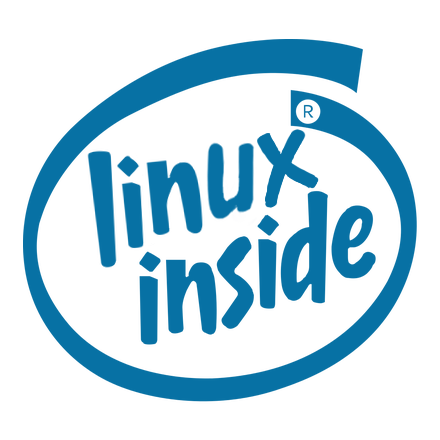I need to just pick a distro, install it on all my laptops, and become an expert on that one. Forget the rest!
I’ve got Void on my T420 (for writing), Mint on another T420 (hosting my music files) and an x380 yoga (with ubuntu studio controls for music production), NixOS on a T440p and a T430, and EndeavourOS on my T16. Previously I ran Arch and Debian on a couple machines, too.
Arch is really fun. I probably just enjoy giving in to my OCD tendancies, so that gets satisfied with my EndeavourOS install. That SHOULD be my final distro, the one that I use forever, eschewing all others.
But there are two problems:
- Too many updates. I fear leaving a laptop in the drawer for a few months and then it crashes when I update it.
- I’m getting nixpilled
Nix is obviously awesome. I love having that master config file. But the nix repos aren’t as robust, and there’s a learning curve to getting everything to work. So now I’m telling myself, “become an expert at nix and then you’ll finally find your home!”
But meanwhile Debian beckons. It’s so tempting to just go back to the safest, stablest distro with all the packages and all the documentation.
I know this is silly but it actually bugs me. Why can’t I just pick a distro?
Has anybody gone through this and then actually made the decisive move to stick to a distro? What compelled you to finally pick one?
I fear leaving a laptop in the drawer for a few months and then it crashes when I update it.
Usually you just need to do
pacman -Sy archlinux-keyringfirst. Updates requiring manual intervention are pretty rare.This is etched on to my soul and retina.
If any Arch pc/laptop I use has not been touched in over 6 month this is the first command and I’m thinking of a way to make an alias called upgrade point to a function that checks the time of the last pacman.log entry against current time and if there is a 6 month or larger difference to automatically do this for me so I don’t forget lol.
I’ve updated Arch systems that were years behind, and everything went just fine. In fact, I’ve had many failed Debian/Ubuntu dist-upgrades, where I ended up giving and reinstalling. I’ve definitely ran into trouble with my Arch installs too, but they were easily fixed.
The thing with Arch is once you’re comfortable with it, it doesn’t really matter if it breaks. It’s as easy to fix as it is to break. Just make sure you don’t need said laptop for something critical right after an update so you have some time to deal with it. But realistically, you’ll be fine.
If you’re really worried, set up automatic snapshots so you can easily revert a borked update in a pinch.
For everything else, there’s containers: be it Podman, Docker or systemd-nspawn. Nowadays there’s also Flatpaks if you have an app that really doesn’t want to play nice with Arch.
10 years and counting on Arch. Desktop, laptop, servers, no issues. Never felt the need to distro-hop apart from trying out NixOS in a VM every now and then just to see if it clicks yet.
That said, being fluent with multiple distros is never a bad thing. If I have to set up an unattended set and forget box, I’ll still turn to Debian with auto updates enabled. It seems like at least you’re not constantly reinstalling all your machines, which is typically the problem with distro-hopping.
Pop os
Try Pop_OS! It ended my distro hopping, love it ☺️
Get your priorities straight. Picking a distro to stick with becomes a lot easier that way.
To give an example of how I dealt with this myself in the past.
Number 1 priority for me was and still is security. I’m willing to give up performance and convenience for the sake of security. A shortlist of distros that in some capacity suffice: Fedora, openSUSE, Gentoo, Arch(/Artix), Alpine, Void, Spectrum OS, Qubes OS, Kicksecure, Whonix, Tails.
However…:
- Whonix and Tails fall off for not being a daily driver.
- My laptop can’t handle Qubes OS.
- Spectrum OS is still WIP.
- Gentoo, Void and Arch(/Artix) require the user to set it all up themselves, but as a newbie I needed a distro that would do the heavy-lifting for me.
- Alpine seemed cool, but I wasn’t able to deal with issues related to musl.
So Fedora, Kicksecure and openSUSE remain. While Kicksecure (arguably) has superior defaults (when it comes to security), it is still a relatively small project compared to juggernauts like Fedora and openSUSE, so I was inclined to dismiss it unless Fedora and openSUSE weren’t able to keep up. Then I learned about how both Fedora and openSUSE had so-called immutable variants, so I got interested in those and what they had to offer. And even though they were still a bit crude, unpolished and kinda finicky to work with; the promise and potential was clearly there. I was especially amused by how Fedora’s
rpm-ostreeenabled one to forego unknown states, bitrot, configuration drift etc and was a very serious step-up compared to all the other options. Soon after I realized that I had found the distro and the rest is history… Since, I’ve obviously found other distros that had some interesting things going on, however none of them (besides the promise of Vanilla OS’ 2.0) has been able to deliver in terms of security and reproducibility. So for me it’s still rather clear cut.In your case, to me at least, it seems you’re inherently attracted towards stable distros (like Debian) but lust after rolling release due to the newer packages they offer. So in your case I’d actually recommend the following:
- Main system: Debian(/Devuan)
- Install Nix and access Nix packages through there.
- Finally, install packages you still need but can’t find elsewhere through the AUR but within a container. I would recommend Distrobox as it makes this go rather easy and painless.
deleted by creator
I jumped around a bunch and then went back to where I started. Ubuntu.
Why? Because I need something that works and I dont need to continually fiddle around with but I can still customize if I want to.
Does that make me a normie? Yup. Do I care? Nope.
Ubuntu go brrrrr.
These are legit arguments. It’s my argument for sometimes using Mint on older machines. I guess I’ve been brainwashed into thinking Ubuntu is bloated. It’s been like seven years since I used it.
Too many updates. I fear leaving a laptop in the drawer for a few months and then it crashes when I update it.
That won’t happen. At most it’s a simple reinstall.
Also, where is your data/.files?
These days all my docs are on the cloud (backed up to my server) and media is on my server. If I was inclined, switching distros is trivial.
Has anybody gone through this and then actually made the decisive move to stick to a distro? What compelled you to finally pick one?
For me nix is work and not a hobby. I would starve if I fuff about with distros
I’m going steady with Mint and still hopping on the side. :)
I am as well. I’ve settled on Arch Linux because it checks off all of my needs in a distro and even works very well with Steam and Proton for gaming. The one thing I am kind of on the fence about is pacman. It leaves a lot to be desired. But, the only way I am going to get exactly what I need is to do something like Linux From Scratch, and while interesting, the amount of time I would need to spend maintaining it is impractical for me right now.
Too many updates. I fear leaving a laptop in the drawer for a few months and then it crashes when I update it.
I’ve had that issue with Arch in the past, on a couple of my laptops that I don’t use very often. Which is why I installed Nobara on them (gaming/multimedia-optimized Fedora). I update them every 2-3 months without any issues, and Nobara itself is rock solid like Debian, whilst still providing bleeding edge app versions like Arch.
Arch was great thanks to the AUR, but now that Flatpaks and containers have become so commmplace, I find myself using the AUR lesser and lesser.
My main Desktop is still on Arch (ArchLabs), but now that ArchLabs is no more, I might switch to Nobara on my Desktop as well.
I’ve had many failed Debian/Ubuntu dist-upgrades
I can’t remember the last time a Debian release upgrade failed me. I’m not sure it ever has.
Did you follow each step in the upgrade section of the release notes? Because I’m looking at the most recent one, and “dist-upgrade” doesn’t appear there at all.
@loom_in_essence
Fedora is a good choice, I’ve tried many and landed here. Current but quite stable and easy to use.
Try it, you’ll like it.Sorry for the late reply.
I know it’s not the most popular choice but why not OpenSuse? They have been around for a long time and have quality figured out.
I have had Tumbleweed installations last for YEARS. I update once a month. The community doesn’t give you the finger if you use the easy to use graphical installer either. The packages are up to date as it’s a rolling release distro. The only downside is for some reason Suse isn’t as popular as other distros.
deleted by creator
That does sound like a fun rabbit hole to explore.
EDIT:
Wait… so FreeBSD is NOT Linux, and yet I can use the suite of Linux apps that I’m accustomed to? I can use Gnome or KDE PLasma or i3? And LibreOffice, etc? This is extra intriguing.
It can run some most Linux programs. https://docs.freebsd.org/en/books/handbook/linuxemu/ Also the docs are very good, and void feels similar to using a *bsd.
But meanwhile Debian beckons. It’s so tempting to just go back to the safest, stablest distro with all the packages and all the documentation.
Have you considered Fedora Linux? I’ve used it on desktop computers in the past due to it’s stability. Even over upgrades it’s still going strong.
Has anybody gone through this and then actually made the decisive move to stick to a distro? What compelled you to finally pick?
The big thing for me was trailing distros in a virtual box or with a spare hard drive. It made it easy to check the availability of packages and trial different desktop environments without committing









